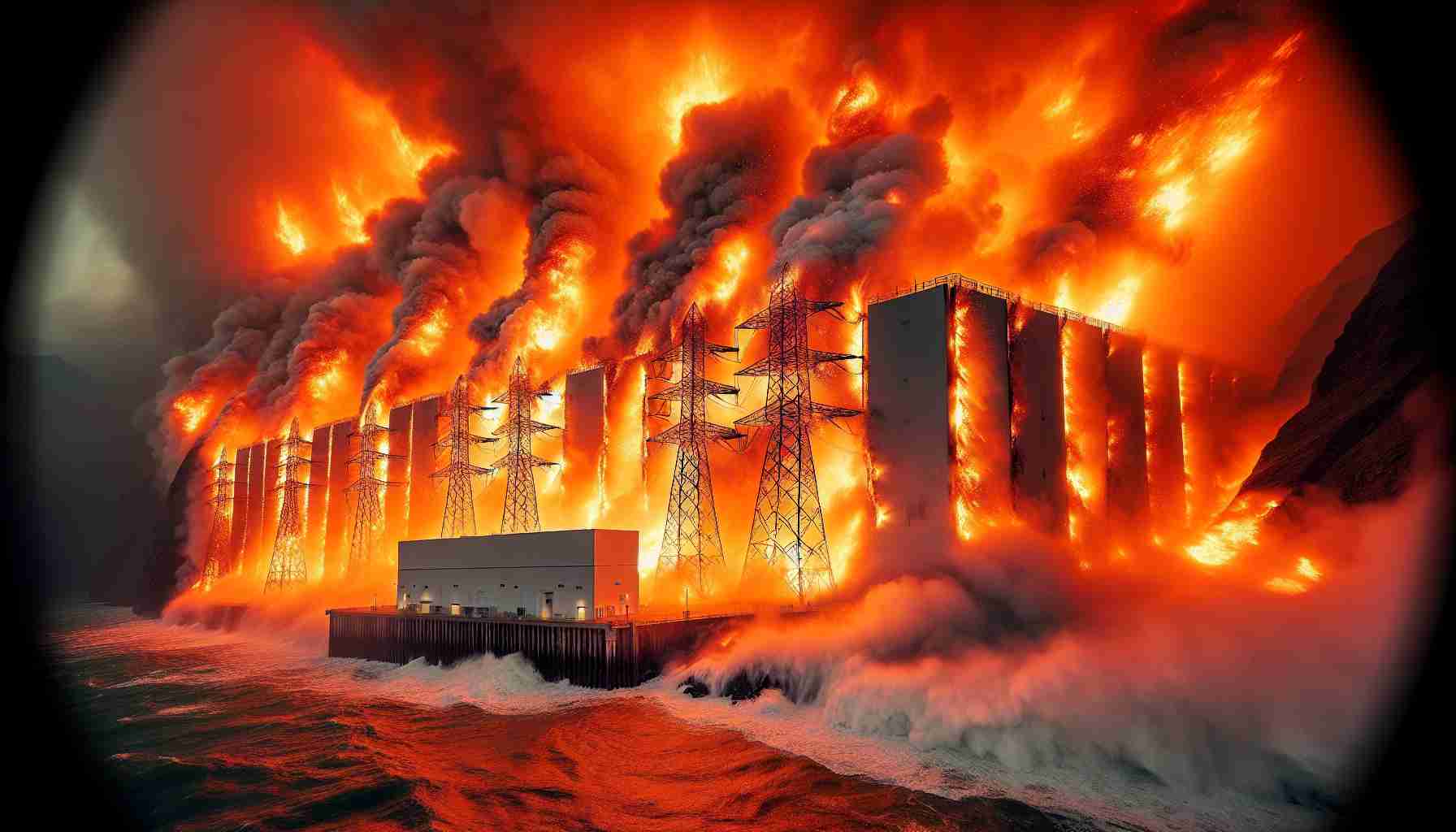- A four-day fire at Vistra Energy’s lithium battery facility in Moss Landing highlighted safety concerns and potential ecological threats.
- Community safety is at risk, with elevated toxic metal levels detected in nearby soils post-fire.
- Vistra Energy is investigating the failure of fire suppression systems during the incident.
- Assembly Member Dawn Addis proposes legislation to shift permitting power to local authorities, enhancing community input in renewable projects.
- Technological advancements and regulatory reforms are expected to strengthen safety and oversight of battery storage facilities.
- Ongoing monitoring of soil toxicity is essential to protect public health in affected areas.
In a dramatic blow to renewable energy safety, a formidable blaze consumed Vistra Energy’s lithium battery facility in Moss Landing, California, for an intense four days. This fiery catastrophe, which commanded the expulsion of 1,200 residents and shut down the crucial Highway 1, sent ominous plumes of toxic smoke swirling over California’s fertile agricultural heartland. As the flames subsided, the community grappled with unsettling discoveries of elevated toxic metal levels in nearby soils, spotlighting potential ecological threats from lithium battery systems.
Vistra Energy is delving into why their crucial fire suppression systems faltered amidst the chaos. Despite reassurances from agencies about the absence of immediate danger, the incident has ignited calls for thorough investigations and robust reforms. The need to bolster permitting protocols for future battery storage projects is gaining urgency, a pivotal point for California’s renewable energy trajectory.
Community-Driven Legislative Push:
Amid the brewing worry, Assembly Member Dawn Addis is championing new legislation to shift permitting power from the state to local hands, amplifying community voices in safety discussions. This legislative move aims to prioritise local concerns and bolster safety measures in renewable projects.
Pivotal Insights:
– Technological Innovations: Anticipate a wave of advancements in safety protocols and fire suppression technologies aimed at safeguarding communities and environments surrounding battery storage facilities.
– Regulatory Transformation: A potential overhaul in permitting processes looms, setting the stage for more stringent oversight and community-centric governance in energy project approvals.
– Public Health Vigilance: Close monitoring of soil toxicity levels remains critical as officials seek to mitigate any long-term impacts on community health.
The Moss Landing fire serves as a vivid reminder of the critical need to forge safer paths within the renewable energy sector. As California steers towards a sustainable future, ensuring safety and community trust is non-negotiable. Stay informed and proactive; our collective energy future hinges on diligent oversight and innovation.
Unveiling the Future of Battery Safety: Lessons from the Moss Landing Fire
How Did the Moss Landing Incident Impact the Renewable Energy Sector?
The Moss Landing fire at Vistra Energy’s lithium battery facility highlighted significant challenges within the renewable energy sector. It pressured regulatory bodies to reassess their safety standards and protocols for battery energy storage systems. One of the key outcomes is the drive for technological innovations and advancements in fire suppression systems designed to prevent such devastating incidents in the future. Potential improvements in chemical compositions of batteries or enhanced monitoring technologies are being explored to mitigate risks associated with large-scale energy storage.
What Legislative Changes Are Being Proposed Following the Incident?
Following the incident, Assembly Member Dawn Addis has proposed legislation that could shift permitting authority from the state to local communities. This legislative move aims to enhance community involvement in safety discussions and ensure local concerns are prioritised in the approval of renewable energy projects. The proposed changes could result in more stringent permitting processes and increased scrutiny regarding community safety and environmental impact assessments.
How Is the Incident Influencing Health and Environmental Monitoring?
The Moss Landing fire has underlined the importance of ongoing environmental monitoring, with elevated levels of toxic metals detected in nearby soils. Moving forward, there will likely be heightened vigilance in monitoring soil and air quality to protect public health in areas adjacent to battery storage facilities. This incident may influence future regulatory requirements regarding environmental impact assessments for renewable energy projects, ensuring sustainable and safe operations.
Explore More on Renewable Energy:
For more in-depth insights into renewable energy innovations and regulatory developments, visit Vistra Energy. Stay informed about the latest trends, safety measures, and legislative changes shaping the future of green technology.
















